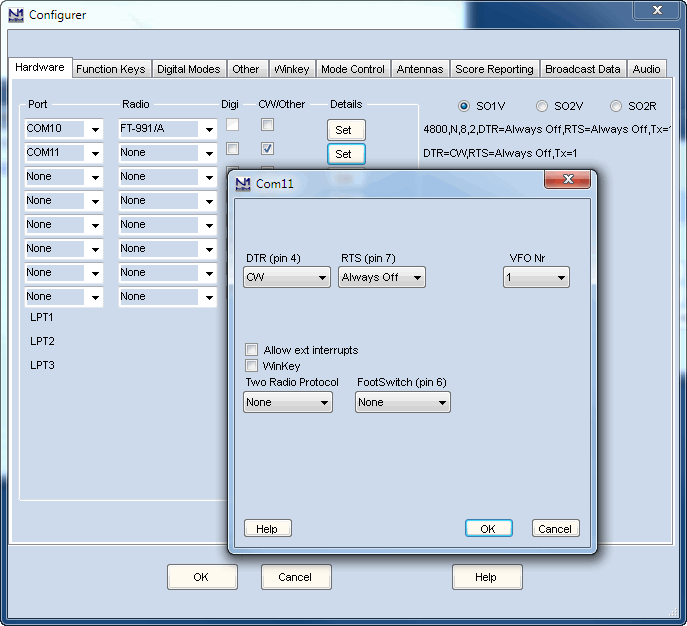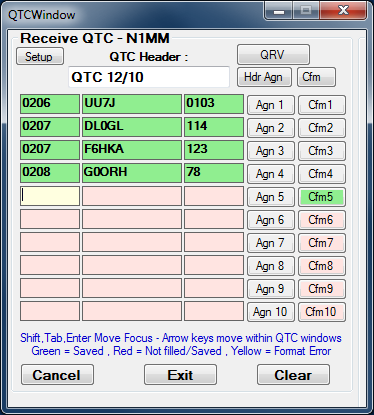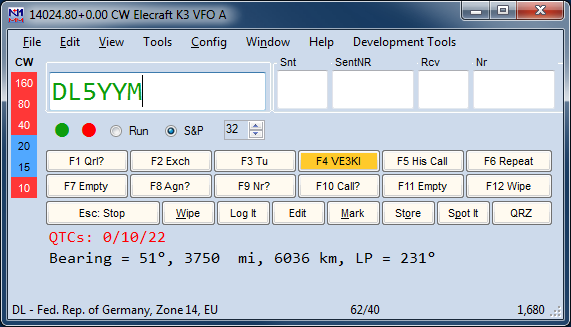

- #N1mm logger supported radios ft 100d how to#
- #N1mm logger supported radios ft 100d plus#
- #N1mm logger supported radios ft 100d download#
Mean it’s right for you! On top of that, things have moved on since 2005. Just because I chose Logger32 doesn’t necessarily
#N1mm logger supported radios ft 100d download#
Which case you are very welcome to download the spreadsheet and adapt the requirements and/orĪdjust the weightings to suit your purposes. The spreadsheet is of general interest but your requirements probably differ somewhat from mine, in (back in 2005!), what’s important to me in how I intended to use logging software. * Please note that both the criteria and weightings are personal to me. Scores by the corresponding weightings and totalling. The spreadsheet calculates a percentage rating for each program by multiplying each of the I installed evaluation copies of several logging programs and entered the scores for each oneĪgainst each of the criteria, adding notes to explain why they scored as they do. I put the criteria into a column of a spreadsheet, adding columns for every logging program IĬould find and a column with weightings for each criterion. Them to generate “weightings” for each one. Next, since some requirements are clearly more important than others, I prioritised and ranked
#N1mm logger supported radios ft 100d how to#
So, how to choose a logging program? I’m used to evaluating software for work so decided to applyįirst, I determined my requirements and listed them out, taking suggestions from fellow DXers

boxes of G4iFB QSLs are now turning yellow and collecting Kiwi dust on a shelf.

This was the ideal opportunity to start computerised logging. Having emigrated to ZL in 2005 and re-started my DXCC hunt with a shiny new ZL callsign, I decided This page is mostly about computer logging using Logger32 by Bob K4CY.
#N1mm logger supported radios ft 100d plus#

Using any tool that can share COM ports, you connect the 7300 to CATMapper, then connected the other port on CATMapper to one side of the Shared COM port for the FT1000. So - let's say you are controlling an FT1000MP from N1MM, but have an Icom 7300 on the desk. CODAN, Elecraft K2, Elecraft K3, Ten-Tec Eagle, Ten-Tec Paragon II, Ten-Tec Orion, Ten-Tec Jupiter, Ten-Tec Omni VI+, Ten-Tec Omni VII, TenTec RX-350, JST-245, JST-245n, DX-77, NRD-535(DG), PowerSDR, Perseus, FRG-100, ZS-1, Elad-FDMSW2, ADT-200A, AOR AR5000, AOR AR8600, SmartSDR.Wouldn't it be nice to use a VFO knob if you have a different rig sitting in the shack? Remember, this works with any radio supported by OmniRig. What has this to do with N1MM? Let's say your running N1MM in a remote scenario where N1MM is the only rig control. The idea is only for VFO-type functions (Frequency, VFO Selection, Split) and TX/RX (the latter to support the K3/0 footswitch input to key the SmartSDR, in my case.). I tested it using an Elecraft K3/0 Mini, which is a source for Elecraft CAT. So, before ARRL DX SSB, when I was going to use Flex's SmartSDR, I came up with the idea. Hey N1MM+ Fans, I often use remote software that does not have a hardware VFO.


 0 kommentar(er)
0 kommentar(er)
